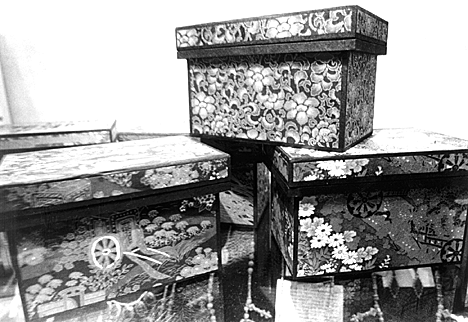The University Record, May 6, 1997
Japanese tea boxes are a hit

Washi boxes, wooden tea boxes covered with Japanese handmade washi paper (shown above), are styled after the large boxes used in Japan to ship and store bulk tea. These boxes are perennial bestsellers at the Museum of Art’s Museum Shop where each one seems to offer something new.
The paper is crafted in Japan in the cold of winter by mountain inhabitants, so that the craftsmen can make use of the pure waters of melting snow. The icy water eliminates bacteria that would contaminate the fibers. The fibers for washi paper, from the bark of small trees similar to mulberry, are steamed, dried, scraped, boiled, rinsed, picked, beaten, and then placed in a wooden vat of cold water with a suspension agent. A screen is plunged into the vat and lifted out, then rhythmically shaken so that an even network of fibers cross and intertwine, forming a strong paper. Sheets of paper are placed one at a time on boards and dried in the winter sun. Photo courtesy Museum of Art

